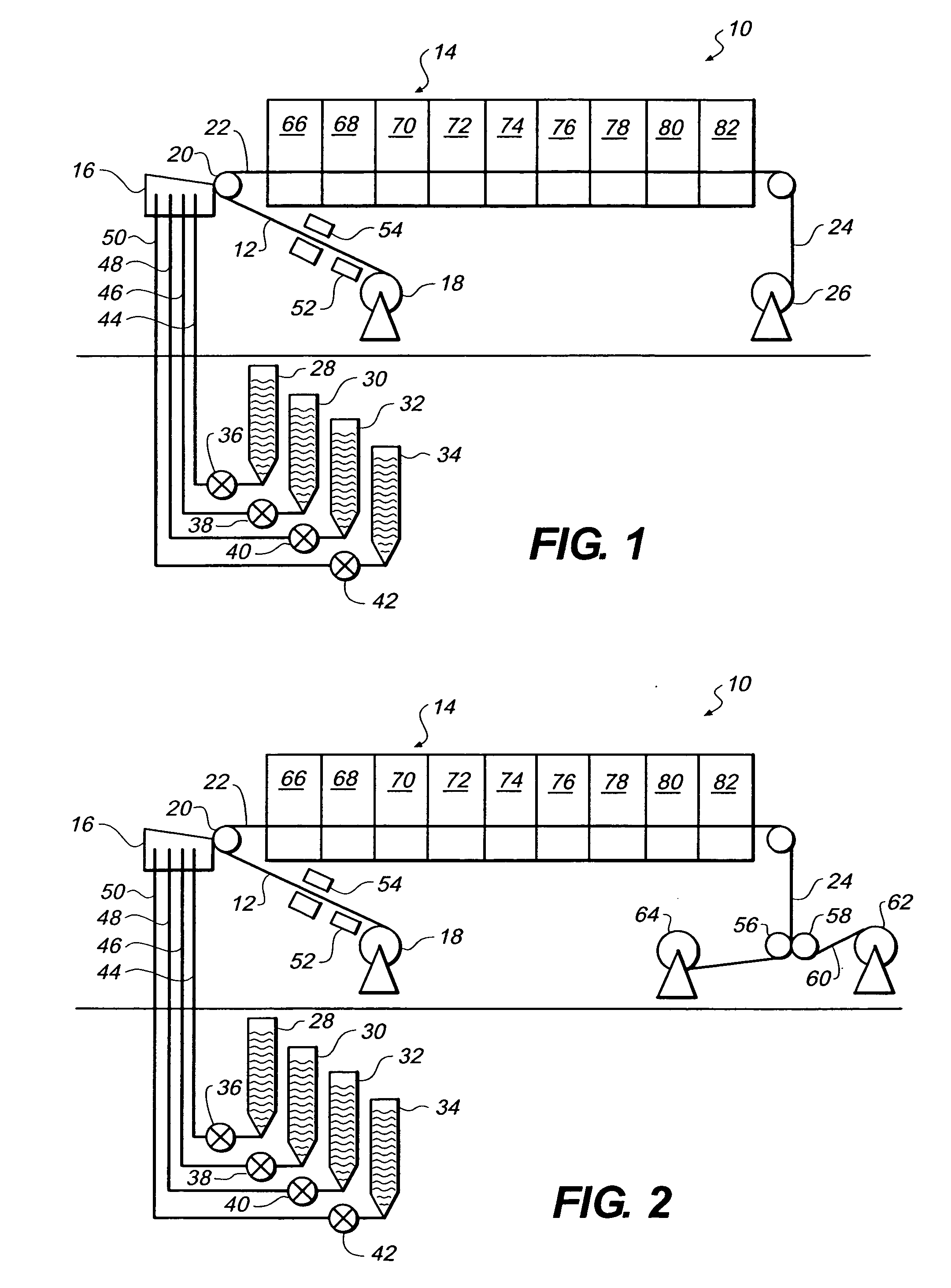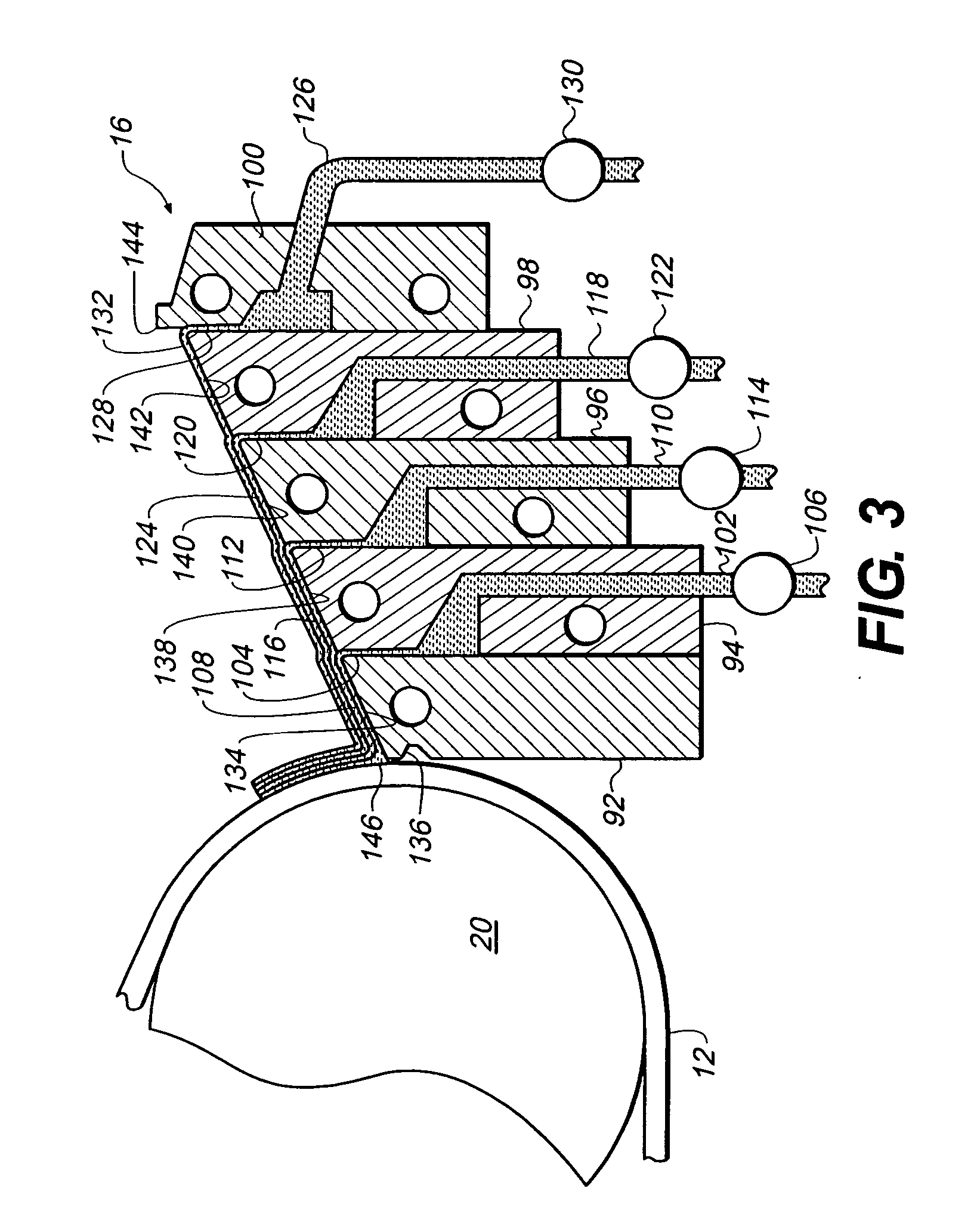Cover sheet comprising an adhesion promoting layer for a polarizer and method of making the same
a polarizer and adhesion promoting technology, applied in the field of low birefringence protective polymer films, can solve the problems of dimensional instability, messy and time-consuming saponification process, and films prepared by melt extrusion that are generally not suitable for optical applications
- Summary
- Abstract
- Description
- Claims
- Application Information
AI Technical Summary
Benefits of technology
Problems solved by technology
Method used
Image
Examples
example 1 (
Invention)
[0158] A 100 micrometer thick poly(ethylene terephthalate) (PET) carrier substrate having an antistatic backing layer (backside) is coated on its front surface with an adhesion promoting layer comprising Cervol® 205 PVA (polyvinyl alcohol having a degree of hydrolysis of about 88-89%, available from Celanese Corp.) having a dry coating weight of about 75 mg / ft2 (750 mg / m2), and Neorez® R-600 (polyurethane dispersion containing carboxylic acid groups and having a particle size less than about 100 nanometers and a Tg less than 25° C., available from NeoResins Inc.) having a coating weight of about 25 mg / ft2 (250 mg / m2). The dried layer is then overcoated with a triacetyl cellulose (TAC) formulation comprising three layers: a surface layer comprising CA-438-80S (triacetyl cellulose from Eastman Chemical) having a dry coating weight of about 208 mg / ft2 (2080 mg / m2), diethyl phthalate having a dry coating weight of about 20.8 mg / ft2 (208 mg / m2), and Surflon® S-8405-S50 (a fluor...
example 2 (
Invention)
[0160] Example 2 was prepared in a similar manner as Example 1 except that the adhesion promoting layer comprised Cervol® 205 PVA at a dry coating weight of about 90 mg / ft2 (900 mg / m2), and Neorez® R-600 at a dry coating weight of about 10 mg / ft2 (100 mg / m2).
example 3 (
Invention)
[0161] Example 3 was prepared in a similar manner as Example 1 except that the adhesion promoting layer comprised Cervol® 107 (polyvinyl alcohol having a degree of hydrolysis of about 98-99%, available from Celanese Corp) instead of Cervol® 205.
PUM
| Property | Measurement | Unit |
|---|---|---|
| Temperature | aaaaa | aaaaa |
| Fraction | aaaaa | aaaaa |
| Fraction | aaaaa | aaaaa |
Abstract
Description
Claims
Application Information
 Login to View More
Login to View More - R&D
- Intellectual Property
- Life Sciences
- Materials
- Tech Scout
- Unparalleled Data Quality
- Higher Quality Content
- 60% Fewer Hallucinations
Browse by: Latest US Patents, China's latest patents, Technical Efficacy Thesaurus, Application Domain, Technology Topic, Popular Technical Reports.
© 2025 PatSnap. All rights reserved.Legal|Privacy policy|Modern Slavery Act Transparency Statement|Sitemap|About US| Contact US: help@patsnap.com



